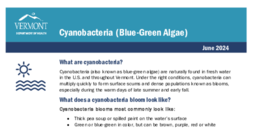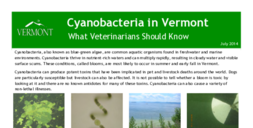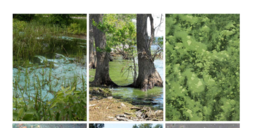What Cyanobacteria Blooms Look Like
It's important to know what cyanobacteria blooms look like so you can stay away from them.
Cyanobacteria grow well in water that has high amounts of nutrients like phosphorous and nitrogen. Cyanobacteria can multiply quickly to form surface scums and dense populations known as blooms, especially during the warm days of late summer and early fall. In recent years, cyanobacteria blooms have occurred most often in northern sections of Lake Champlain — such as St. Albans Bay and Mississquoi Bay.
Cyanobacteria can make the water appear dark green, and look like pea soup or spilled paint. Blooms can also appear as white, brown, red or purple.
Watch the video below to find out how to identify cyanobacteria, and see more photos of what cyanobacteria look like and what are not cyanobacteria.







